The Challenge of Winter Storm QPF
2012-02-25 00:28:48.000 – Rick Giard, Weather Observer / Education Specialist
Sounding Via PSU Vortex
Anyone who spends much time outdoors in winter playing or working can tell you that snow, and frozen precipitation in general, comes in virtually infinite varieties. Each snow event occurs under slightly different conditions of temperature, humidity, winds, etc. Each frozen particle that forms takes on specific sizes, shapes and moisture content. Moreover, once that delicate snow crystal lands on a surface it immediately begins to change. Thus, one of the most challenging aspects of wintertime meteorology is QPF – the Quantitative Precipitation Forecast.
The exact amount of atmospheric water available is the first determining factor for QPF. One common measure (estimate) of this is Precipitable Water (PW), commonly obtained from radiosonde (weather balloon) data and recently through the Global Positioning System (GPS). Regardless of precipitation type a certain portion of the PW is theoretically available, although the exact amount that becomes precipitation depends on many other factors. During warm rainfall events it is generally not a concern whether the actual rain amount is 1.00 or 1.25 inches. However, snow (or any other type of frozen precipitation particle) varies greatly in actual water content. The ratio of snow accumulation to actual water content ranges from roughly 6 to as much as 30 inches per inch of Liquid Equivalent (LE), i.e. melted snow. If some sort of mixing occurs during the storm – changing to sleet or freezing rain, for example – accumulations are subsequently reduced even though the actual LE amount remained the same.
One important tool for determining whether changeover might occur is the sounding (shown). The atmospheric sounding is usually done by launching a balloon with instrumentation attached. This is done twice daily at National Weather Service (NWS) locations across the country. The most important data contained in the sounding include temperature, dew point, wind direction and speed. The temperature profile is critical for determining the possible precipitation type(s) that could occur. For example, if the temperature is cold throughout the atmosphere an all-snow event would be likely. Conversely, if warmer layers are present the potential for mixing or changeover exists. Hypothetically, if a deep warm layer is observed aloft while a shallow cold layer is seen at the surface, this would be a classic freezing-rain profile. It should also be noted that the sounding is a snap-shot in time over one place, and frequently changes as the storm travels across the region. For guidance in predicting how this will change, one must look to computer model generated soundings for your specific location, which are helpful but not completely reliable – especially in the complex White Mountain region!
So, when you see an outlook issued for “six to eight” inches of snow, please understand that this is an estimate based upon available information and subject to change and interpretation. Even the skilled and experienced forecaster occasionally will have a “busted” winter QPF prognostication. Through verification and post-analysis of forecasts, we learn more with each event.
Rick Giard, Weather Observer / Education Specialist
Team Flags Return for Seek the Peak’s 25th Anniversary
Team Flags Return for Seek the Peak's 25th Anniversary By MWOBS Staff Mount Washington Observatory is looking forward to continuing a much-loved tradition for Seek the Peak’s 25th Anniversary: Team flags. In inviting teams
Meet Summer Interns Zakiya, Max and Maddie
Meet Summer Interns Zakiya, Max and Maddie By MWOBS Staff We are excited to welcome six teammates to the summit of Mount Washington this summer! During their internship, these students and graduates will play
Saying Goodbye to the Summit
Saying Goodbye to the Summit By Alexis George After an extraordinary last three years working as a Weather Observer and Meteorologist, I am excited to pursue a different career. As sad I as am






